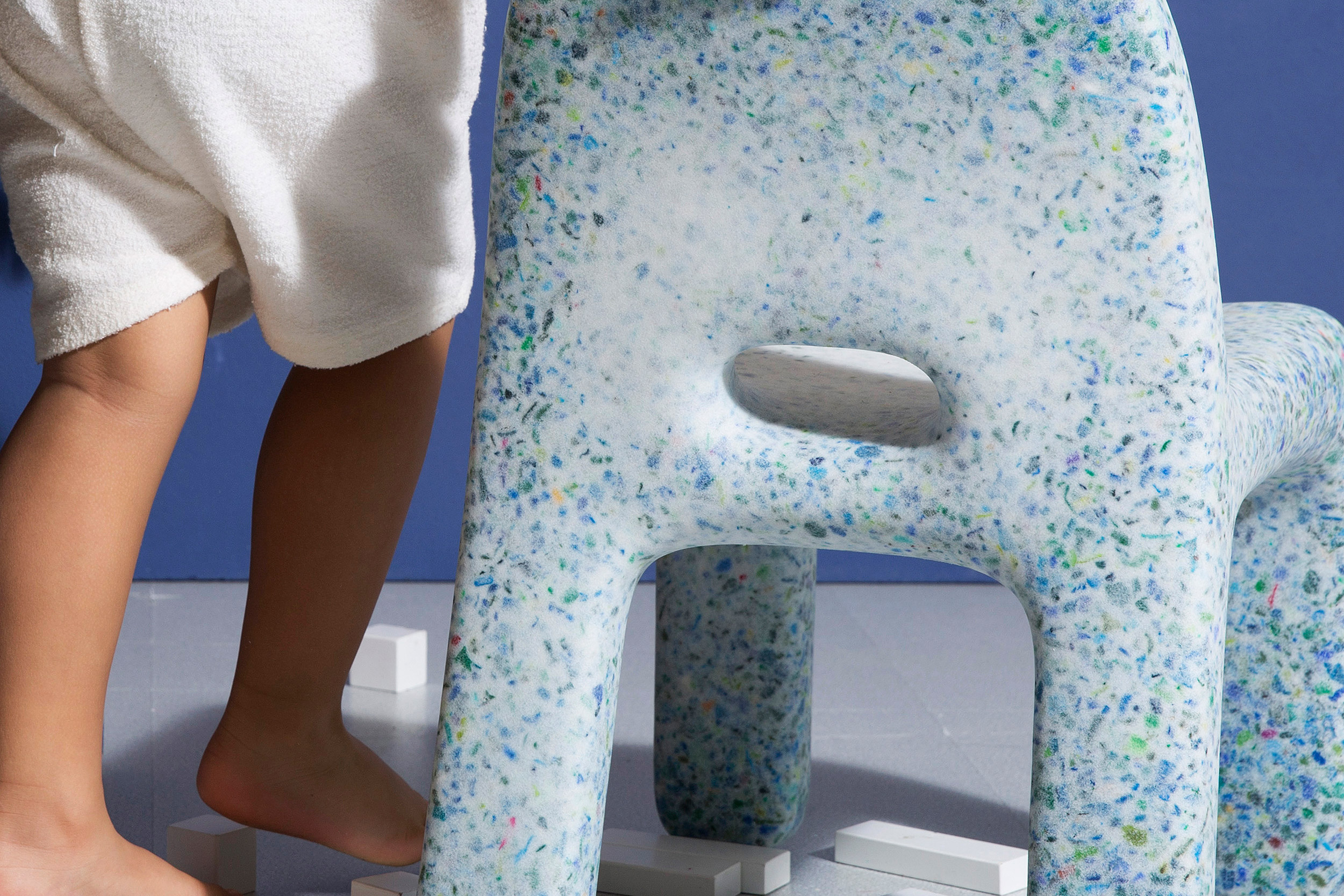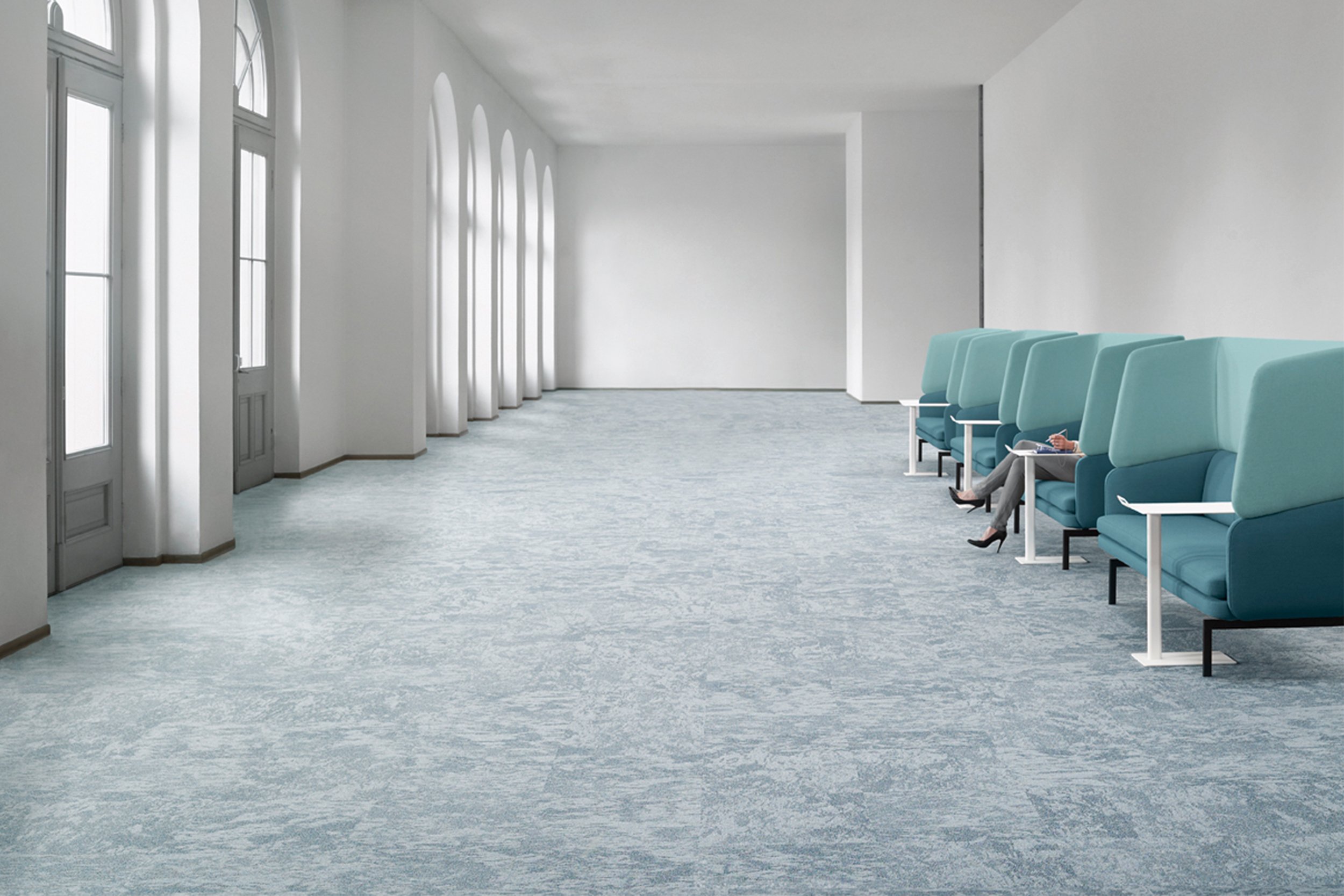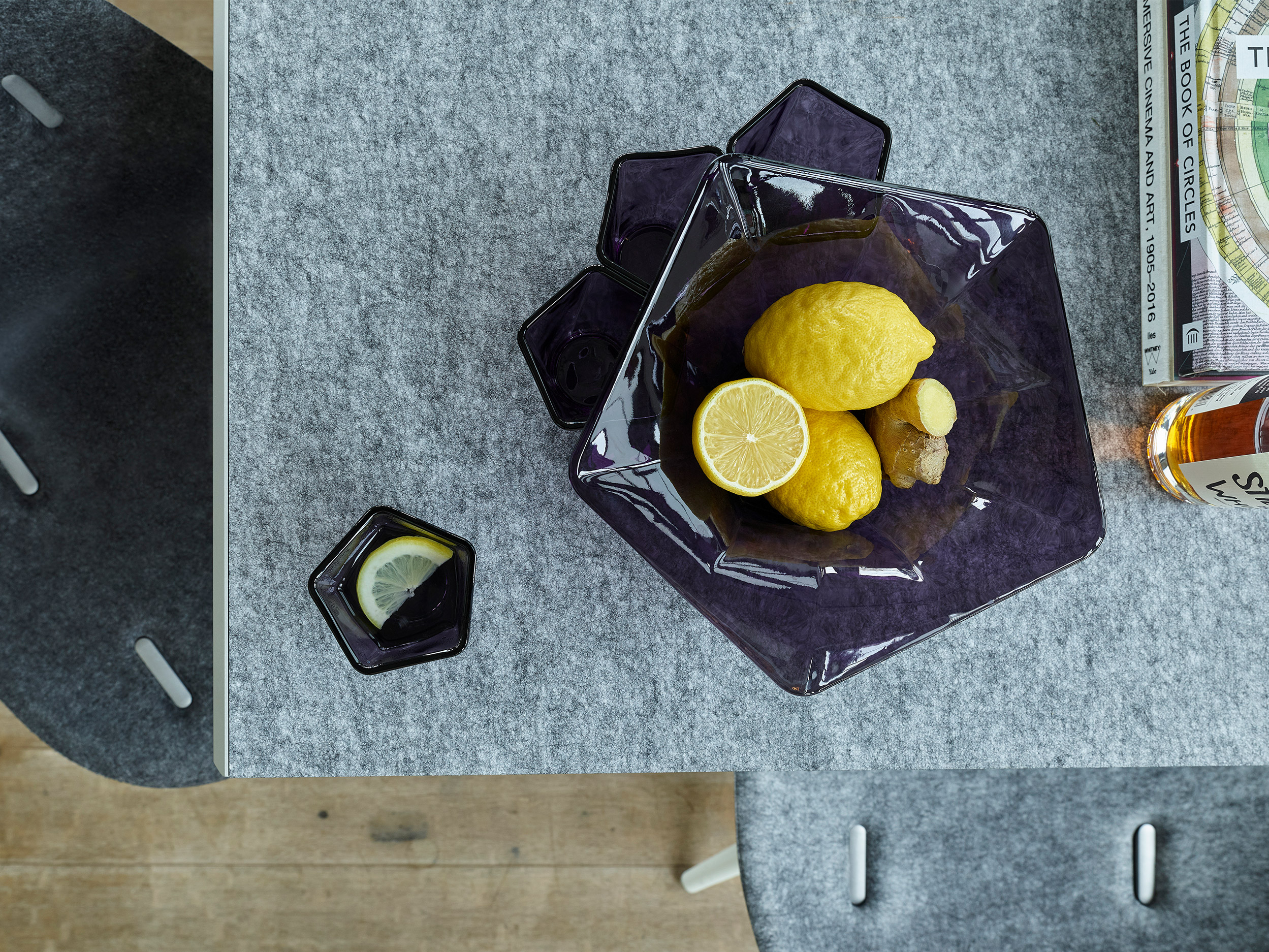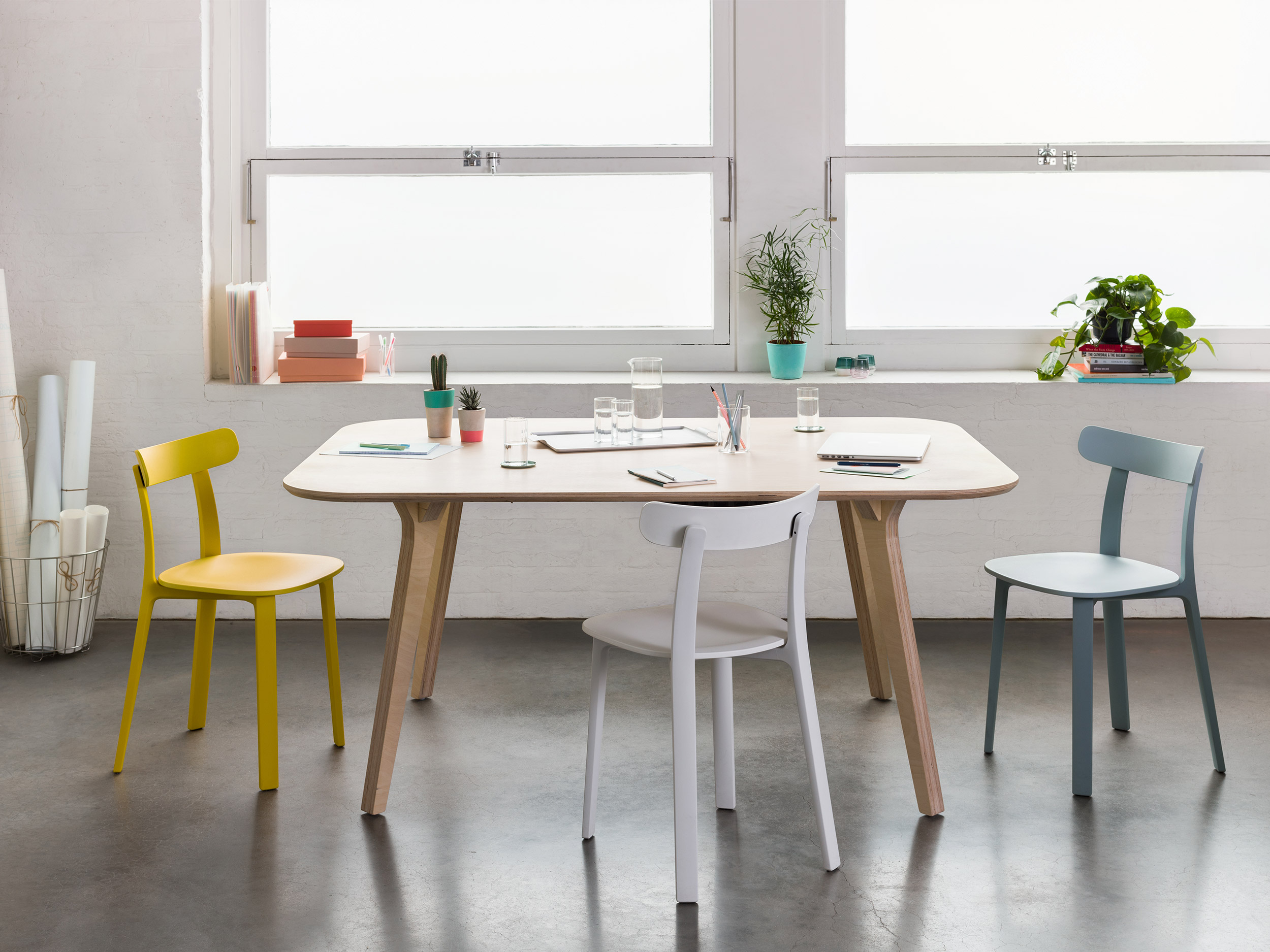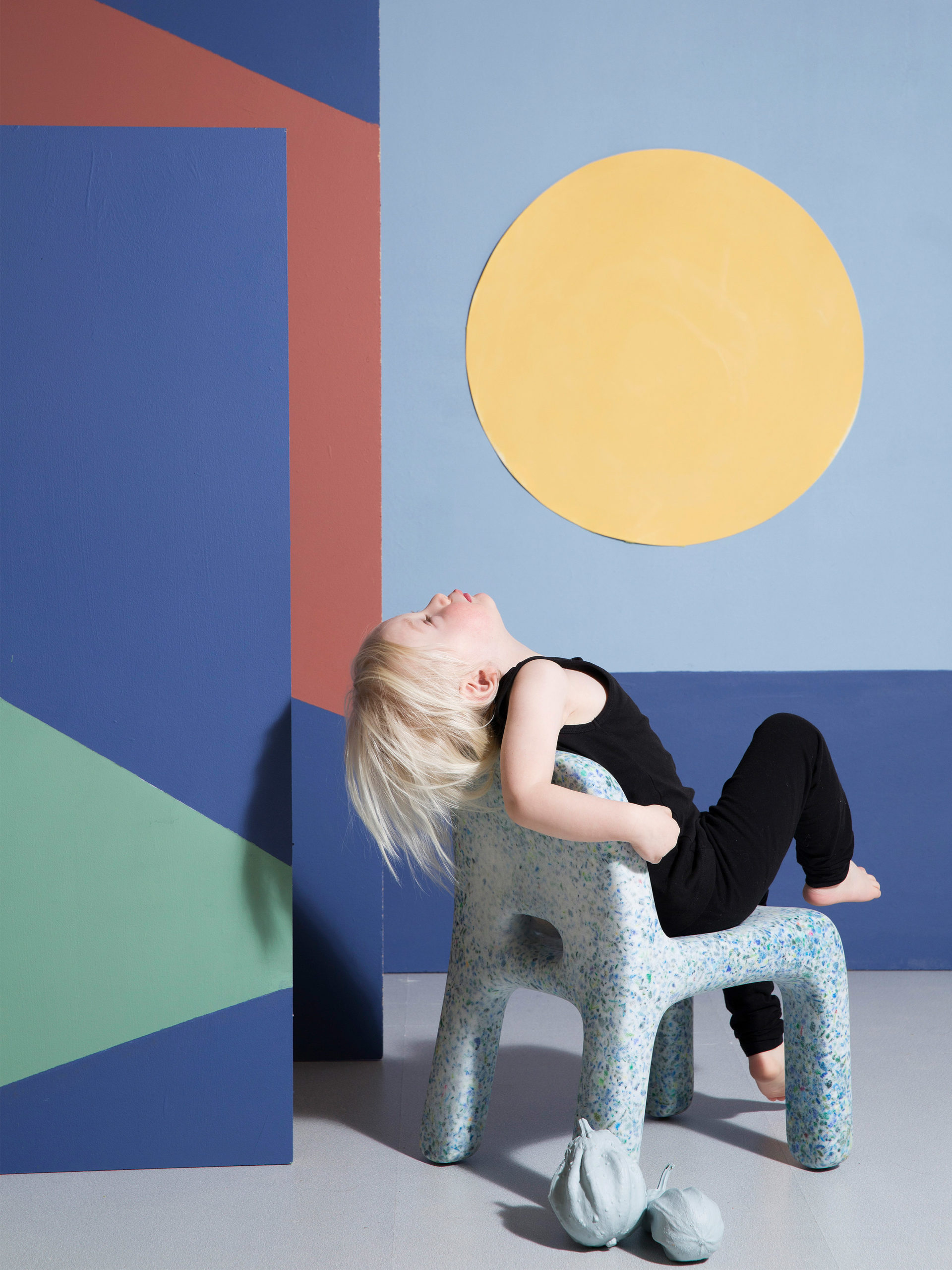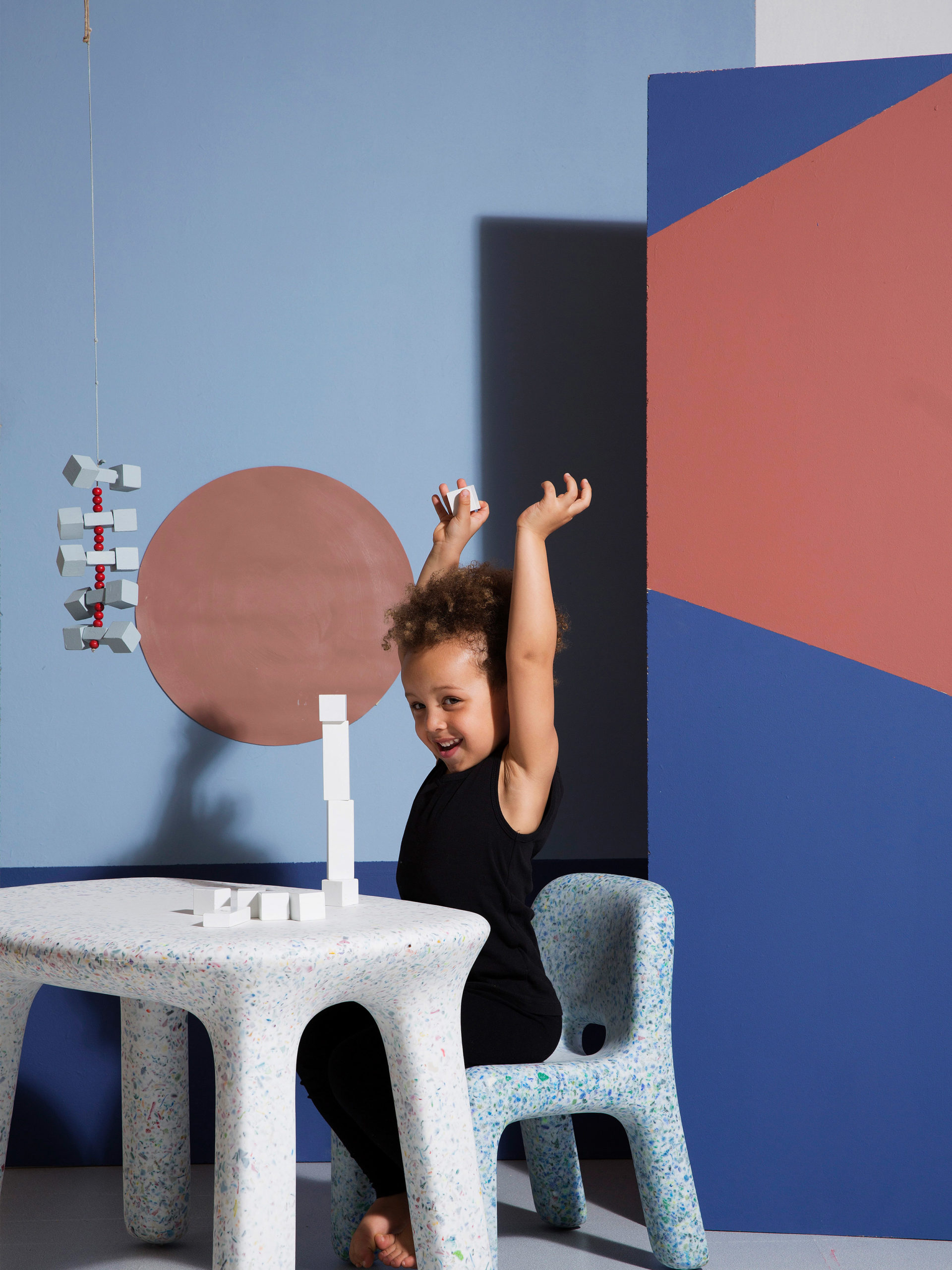Designers – will they save the world?
NICOLE GUTSCHALK • 07.09.2018
We all realise that we are wasting resources on a large scale – and the subject of sustainability is now right at the top of the agenda Designers and manufacturers therefore need to look for solutions that are sustainable and also operate in line with a circular flow economy. But how far has the industry actually progressed? – A review of the situation.
It’s annoying: Only bought a few weeks ago, the new hand-held blender is already giving up the ghost. You would actually like to have it repaired rather than throwing it away. But the option of finding an affordable repair service is limited. And paying more for the repair than the blender cost in the first place doesn’t make any sense. It therefore ends up in the rubbish bin – together with 40 tonnes of electrical waste from our households worldwide such as computers, TV sets, mobile phones and washing machines.
There’s no denying it: We are living in the age of consumption. In an era when consumption determines the manner in which we live and in the final analysis forms the breeding ground for our economic system. At the same time we see how the effects of what we consume on a daily basis are spreading as a catastrophic scenario before our very eyes. For example every Saturday at the waste disposal site. When tables, shelves, chairs and lamps are hauled out of the boots of the seemingly endless queue of waiting cars because they have broken or have gone out of fashion. Or, if we look at the carpets of plastic on our social media channels, drifting uncontrollably through the seas, and have now become as large as islands. And lastly also when we drag ourselves through the streets of our central European homeland sweating buckets – like this summer – in sub-tropical temperatures, as is normally only the case during our holidays in more southerly climes.
«We need a re-think!», or «Why aren’t we finally doing something?» scream the headlines of daily newspapers and magazines over the last few weeks. This should now be clear to everyone. But who is actually this «We»? We the consumers? Certainly.
«We need a re-think!», or «Why aren’t we finally doing something?» scream the headlines of daily newspapers and magazines over the last few weeks. This should now be clear to everyone. But who is actually this «We»? We the consumers? Certainly. We can actually take action in our everyday lives with regard to saving resources and living ecologically. For example by choosing not to fly and travelling on holiday by train. But will that be enough? Hardly. We the politicians in other words? No question. Sometimes also in the form of bans, like President Macron demonstrated a few weeks ago when he decided that all plastic crockery must have disappeared from France by 2020. However, recently the manufacturers of all kinds of consumer goods are also being held responsible. And with them the designers, who create the products for end-consumers. Designers, whose main aim nowadays should be to design and manufacture products in such a way that they can be used for as long as possible, are easy to repair and at the end of their longest possible lifespan can be recycled or at least disposed of as effectively as possible. An approach based on the principle of the circular flow economy, as also described by Giulia Bernardi in her article «Opportunities and challenges of the circular flow economy». A company therefore acts in line with the idea of a circular flow economy if it designs its products in such a way that they can also be made from used raw materials and recycled again at the end of their use. The raw materials used can be re-used almost endlessly in this way – in line with the example of the natural cycle of matter. A win-win situation – for manufacturers and for end-consumers.
However, if one looks at the international market – particularly the furniture industry – unfortunately you will soon become disillusioned. It almost seems as if the subject of recycling is still a niche topic, which only a few individuals want to deal with. But nevertheless something is happening – here are our favourites:
Desso
The Dutch company Desso – which also operates a branch in Switzerland – manufactures carpets for aircraft, ships, large-scale offices, banks and hotels. These carpets are made completely from recycled materials – according to the principle of «cradle to cradle». In addition, the carpet manufacturer focusses on the strategy of renting out. In other words this means: If a carpet is worn out, it is brought back to Desso to be recycled there and is then re-worked. This brings about a win-win situation on both sides: The customer gets a new carpet, without using any new resources and the company itself remains independent – particularly with regard to fluctuating raw material prices.
Pentatonic
Sometimes it’s glass screens from old Smartphones, sometimes aluminium cans, another time plastic bottles and sometimes even cigarette butts from which the London-based design studio Pentatonic creates new materials and makes them into furniture. In other words new products are being made from the largest human resource of all – from rubbish. The company was founded by the former marketing manager at Levi‘s UK, Jamie Hall and the German-born marketeer Johann Bödecker. Generous financial support for their furniture and accessory collections is received by Pentatonic from the Taiwanese multi-corporation and online trader Miniwiz, a company that has fully signed up to the circular flow economy.
Das Opendesk Circular Project
Above all from the waste from the furniture industry, in particular wooden furniture, Opendesk manufactures furniture for flexible work spaces. Sent as digital files, the furniture templates from Opendesk are supplied to local carpenters all over the world and cut out using digital cutting machines (CNC milling machines). In contrast to conventional manufacturers, Opendesk has no means of production – therefore manufactures furniture without owning a factory, by creating a worldwide network of independent manufacturers.
Ecobirdy
With the main aim of introducing children to the circular flow economy, the Antwerp-based brand Ecobirdy makes children’s furniture that is manufactured completely from recycled plastic toys, which can in turn be fully recycled. The collection includes a chair called Charlie, a table by the name of Luisa and the bird-shaped container Kiwi as well as a lamp in the shape of a rhino. The creations by Ecobirdy are intended to create a feeling for sustainability in the children. This is because 90 % of children’s toys are still made of plastic worldwide and after an average use of six months, they end up in waste incineration plants, landfill sites or in the oceans.
Interview with Leif Huff
«This has now become part of the training for designers – and should also correspond to their basic ethical approach.»
Life at Home: Why do so many designers seem to find it difficult to design a product in such a way that it can be used for as long as possible, be repaired easily and then recycled?
Leif Huff: I don’t think that in principle designers have a problem with designing products that can be used in the long term. On the contrary. This has now become part of the training for designers – and should also correspond to their basic ethical approach. It can therefore not be the desire of a designer to design things that have a very short lifespan.
LAF: There are studies that mention that 80 % of the products that are now designed by designers for consumers will be thrown away in less than six months. Sounds ridiculous doesn’t it?
LH: Completely. However, in the final analysis this is not the intention of the designers. It’s because in most cases they will be given a brief by a manufacturer or contractor, in which it is already specified pretty precisely what a product should look like. And mostly these products are not intended for a particularly long lifespan. In addition, material technologies are generally strictly prescribed. Nevertheless designers should always try to exert their influence.
LAF: How can this be successful?
LH: By asking questions. Let’s take the example of a product from the beauty industry, say a lipstick. In this case a designer might ask whether it’s really necessary to add chrome to the plastic case of a lipstick to make the product seem more high quality in line with the brief. Or whether there might be a different design mechanism to achieve the same effect, but with more sparing use of resources in the manufacturing process.
LAF: However, does a designer in reality actually have the opportunity to ask such questions?
LH: Probably too rarely. But nevertheless: One has to try. For us at IDEO one objective is to continuously be asked such questions. Which is luckily often the case. One of the reasons for this is that we have already been working with most clients for many years. This is certainly an advantage. However, it’s probably unfortunately a fact that designers in reality receive too little feedback. Also because the manufacturing technologies are strictly prescribed in most cases. Precisely with regard to consumer goods – but also in the field of technology. This is because electronic devices are based on the principle of continuous replacement and further development and are therefore not designed for a long life from the outset – this is almost in the nature of the thing.
Leif Huff
Manager of Design-und Beratungsfirma IDEO in Munich
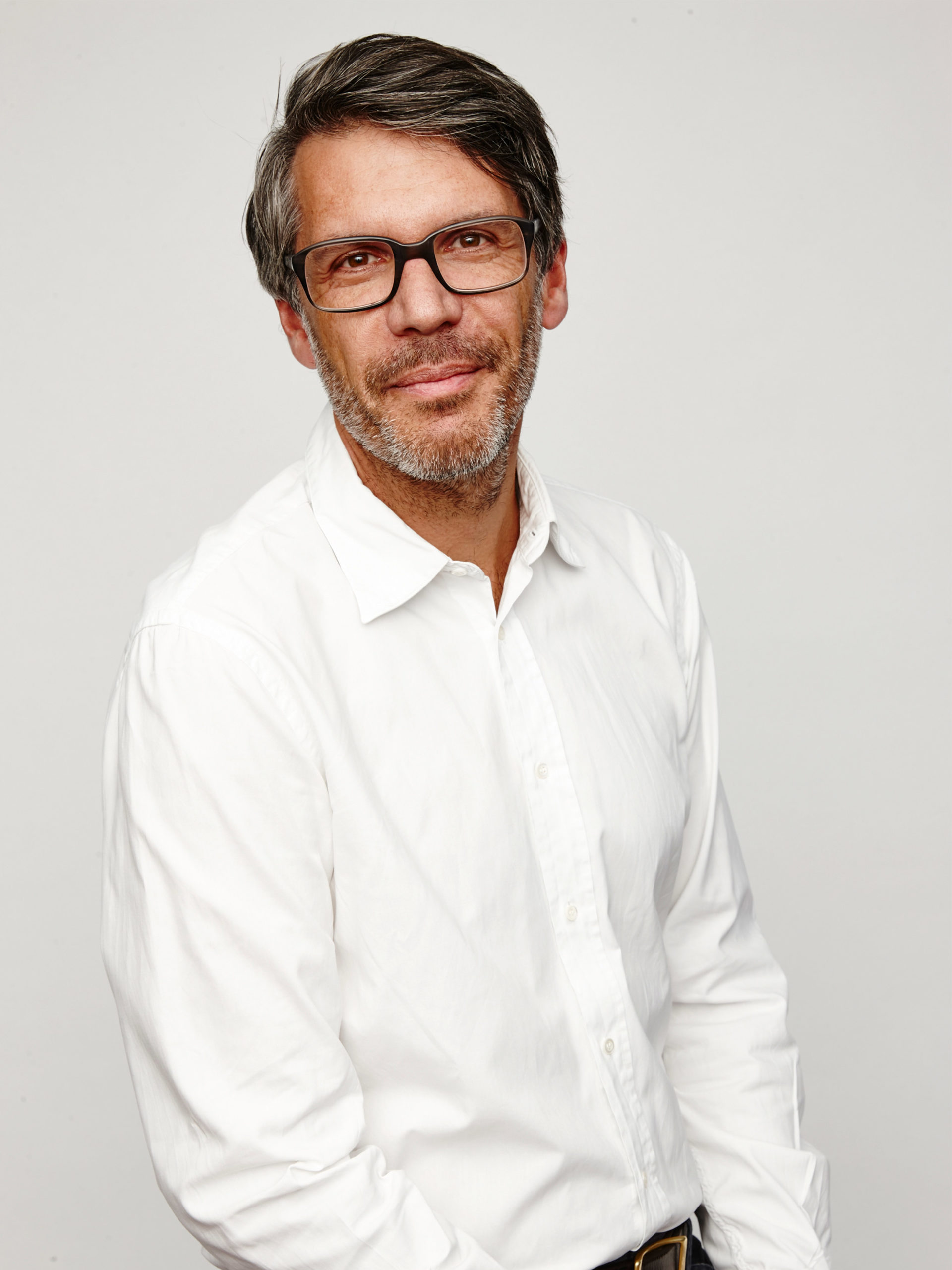
«On the one hand, the consumer must relinquish his high demands – precisely with regard to material quality and on the other hand manufacturers should handle new manufacturing technologies more openly and not shy away from using new materials.»
LAH: This really annoys a lot of consumers. Because they did not ask for an electronic gadget to already go out of date after just a few months.
LH: Consumers should not wriggle out of the matter too easily either on this point Because the continuous demand for the highest quality, latest, fastest device is clearly evident. It’s also identifiable because many people don’t even try to have their defective product repaired. Even when they only have to replace the battery or a broken display, the device usually still ends up in the rubbish bin and a new one is purchased. There is therefore a reciprocity: On the one hand, the consumer must relinquish his high demands – precisely with regard to material quality and on the other hand manufacturers should handle new manufacturing technologies more openly and not shy away from using new materials. In other words difficult questions need to continue to be asked by both sides if we want to find a way out of the linear economy in the future. This is certainly a challenge – but an extremely pleasant and exciting one at the same time.
LAH: Your design and consultancy company IDEO is facing this challenge and has produced the Circular Design Guide together with the Ellen MacArthur Foundation. A guide, whose main aim is intended to encourage companies to jump on the bandwagon of the circular flow economy. What «fruits»has this commitment borne so far?
LH: The subject of the circular flow economy is new for all for us. At the moment we are therefore designing something that is fundamentally new. The pioneer in this field, the Ellen Mac Arthur Foundation, is trying in its first step to bring various players together: Namely in the design field, consultants, advisers, investors and also the manufacturers should sit together round a table – which is in principle already a good starting position. This is because many companies, at least we notice this when exchanging information with our clients, have already been asking the question for a long time of how they can find a way out of this «produce-consume-throw-away cycle» – in other words a way out of the linear economy. The fact that we cannot continue as we have done previously owing to limited resources is now clear to many people. However, it’s not clear how the new ideas, on which the circular flow economy is based, should be handled. And this can be overcome with our Circular Design Guide. We are currently moving away from the existing system to create something completely new and we have to ask the right questions for this.
Tim Brown: Design & the circular economy
LAH: What questions need to be asked?
LH: For example: Does every person, who drills a hole in the wall three times a year, really need their own drill? Or could one also have a different approach? But if there is the opportunity to buy a drill – although I only drill these three holes every year – I will naturally go the DIY store with certain expectations. Also in terms of finance. And then I already face a dilemma. This is because it is assumed that I will tend to reach for a cheaper, lower quality product because I’m only going to use it on rare occasions. In other words a product, which is hardly likely to have a long lifespan. However, if a drill has a life cycle of at least ten years and during this time is to be used frequently by several users, then there is already a completely different quality requirement.
LAH: We therefore also have to question the construct of «ownership»?
LH: Precisely. This is a process that we have started and which we are trying to structure together with various companies.
LAH: Will radical measures –along the lines of a fundamental ban on plastic – put us on the right path in the future?
LH: Unfortunately in principle it’s true that common sense, in other words good judgement, will not always prevail when it concerns consumption. Although actually everyone should understand that a single-use beaker, which ends up in the rubbish bin, will become a problem or the problem already existed from the beginning. At such times as consumers we seem to switch our brains off. And also when we choose to fly instead of travel by train or drive somewhere in the car instead of cycling.
LAH: Convenience?
LH: Certainly. And a convenience for which we as designers also share some responsibility. In order to therefore go back to the question of bans, with which we could educate consumers – that is certainly an option. However, I believe that it is more likely that we the designers will be able to re-incorporate common sense back into the things we design. If for example I am able to associate rail travel with a positive experience and therefore awaken an interest in consumers, then some people will decide to travel by train rather than by plane. This is because the right design also always means helping people to make the right decisions.
LAH: How much does the circular flow economy feature in the furniture industry?
LH: There is some action in this sector. Ikea is a good example. There is a step stool in the range there, which is selling well and is made completely out of recycled material. I believe that consumers notice that such a stool is made of a special material. Perhaps with a material that feels unbelievably nice – and this shows the quality of the product. If this occurs, then as a company we have already won and I will be able to draw additional conclusions from this.
LAH: Let us talk about design thinking, a term that has characterised your company and which has become a real slogan. A few definitions for this can be found – in your opinion how should the term be understood?
LH: It definitely does not mean simply only thinking about design. I’m very worried that design thinking has become a slogan, which promises rapid solutions in five steps. Design thinking is much more about an attitude, which moves people and their requirements into the centre. About a way of thinking that wishes to encourage changes and finally should bring new impetus into a business. Naturally this requires also thinking about the existing culture and the production processes in a company. Because one can’t desire anything new without questioning what is already in existence – that simply doesn’t work. Once again questions should be asked at this point. Questions with which I can then work as a designer to define the meaning and purpose of a company.
LAH: And companies are quite happy to do this?
LH: Some companies have difficulties with this approach from the outset because they are not used to moving away from the existing structures and stringent processes. They are also not prepared to try out something new so they can then learn from the mistakes that will inevitably be made. But this is exactly what design thinking is about: Mistakes should not be punished but new mechanisms put into place. Only in this way can we satisfy the requirements of consumers and provide something valuable. If as a company I therefore manage to no longer punish mistakes and reward not only individuals but teams for their performance, I will be in a position to bring about cultural changes in a business. And in this way I will enable my staff to think differently and emphatically.
LAH: What are the benefits of design thinking for the circular flow economy?
LH: I believe that the circular flow economy will bring us much closer to users – and at this point I would consciously not like to talk about consumers…
LAH: Why not?
LH: Because consumer is an economic term. I would like to move away from that. This should be much more about people. Because the system of the circular flow economy is much closer to people. For example if in the future I suddenly have the opportunity to hire a drill instead of buying one, because I only drill three holes every year, then I have reacted to the person and offered a corresponding service. And if I learn something from this circular flow system and can incorporate it in my design approach, then I have very quickly reached the approach of design thinking. As I have already said: A design thinker is constantly trying to place people and their requirements at the centre and travel down new paths. This is why the two models fit together very well.
LAH: Will designers therefore be able to save our world in the future?
LH: Primarily I am not thinking that our world will disappear – even if we are now heading down the best way of achieving this. And it would be naive to think that designers can save the world on their own. This is because in the final analysis we form only part of the economic system. However, as designers we naturally bear a certain responsibility. Part of our task will therefore continue to be to insistently ask the right questions and create a new impetus in this way. But this is possible only together with other players. I at least find it optimistic when I see, such as in London, in our «Circular Economy Co-Lab», various companies sitting down at a table – who may even be competitors – and try together to move the subject of the circular flow economy forward.
PHOTOGRAPHY: Desso, Pentatonic, Opendesk, Ecobirdy
VIDEO: Circular Design Guide
